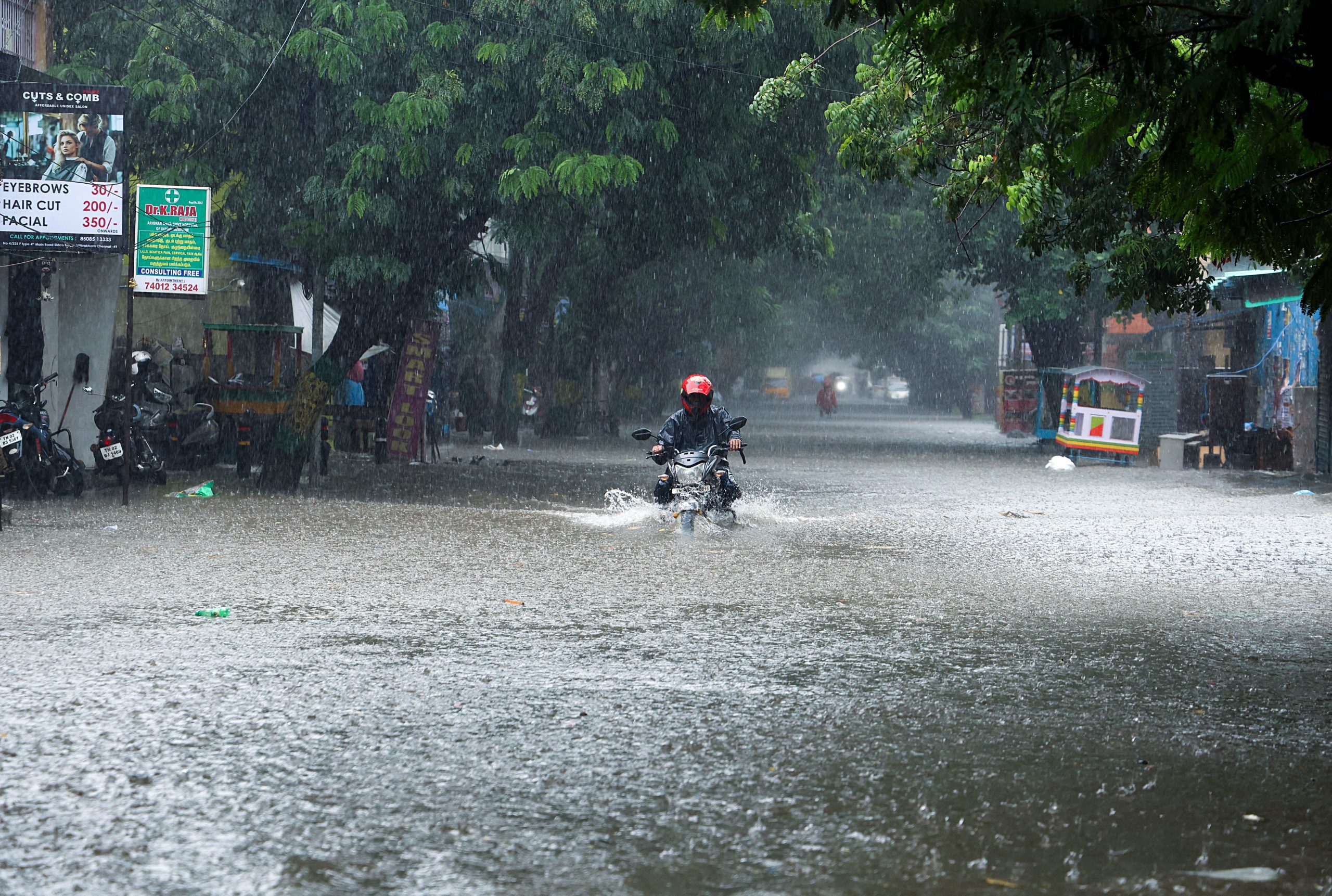People in India and neighboring countries eagerly await the monsoon rains, which signal the end of the scorching summer heat and bring much-needed water for crops that sustain crores of people. However, the increasing frequency, intensity, unpredictability and eccentricity of extreme rainfall events are making things increasingly difficult for the people. In 2024 alone, hundreds of people died in India due to heavy rainfall. Across South Asia, hundreds more have already died this year. Experts warn that soaring temperatures and intense rain are also accelerating glacier melt in the Himalayas, triggering catastrophic floods and landslides.
The recent monsoon rains claimed more than 110 lives across Pakistan and many more are left injured and missing. The heavy rains and unstable weather conditions cause much damage to life and property almost every year in the neighbouring country. The Met Department has further warned of possible flooding, disruptions and damages. However, at the same time, several cities in Pakistan are also experiencing a spell of intense heat.
Similarly, around 100 people died in April this year after unseasonal heavy rain lashed parts of Nepal and India, although monsoon-related torrential rain usually starts in June in this part of the world. 82 people were reported to have died in rain-related incidents in Bihar alone over just two days in April, 2025. Just a week earlier Bihar catastrophe, deadly floods in Nepal’s Bhote Koshi River killed several people and left dozens missing. It was said to have been triggered by the draining of a supraglacial lake in the Tibet region.
In India, several regions are currently grappling with heavy rainfall and widespread flooding, resulting in major disruptions and extensive damages. States such as Himachal Pradesh, Uttarakhand, Maharashtra, Gujarat, Telangana, Andhra Pradesh and Haryana have been severely impacted by the monsoon-triggered floods. The relentless downpours cause rivers to overflow, inundate large areas and damage critical infrastructure, especially in hilly states like Himachal Pradesh and Uttarakhand.
Similarly, cloud burst, lightning and storm-related incidents in Bihar, Uttar Pradesh and some other parts of the country also cause deaths almost every year. The situations become worse as, while some parts of India face flash floods, several other parts of the country confront heatwave-like conditions.
Here, the question arises as to why India and its neighbouring countries face these kinds of unwarranted and untimely extreme weather conditions, which invariably cause a great deal of damage. Are these extreme weather conditions directly related to climate change?
The answer is yes, the flooding across South Asia, especially in India, Nepal and Pakistan has sometimes been extensive and severe, affecting millions of people and causing widespread damage and destructions. Intense monsoon rains combined with glacial melt-water trigger floods and landslides in several parts, resulting in displacement, loss of lives and major damage to infrastructure.
Pakistan is among the world’s most climate-vulnerable countries with its 25.5 crore people increasingly being exposed to extreme weather events. In 2022, devastating monsoon floods submerged one-third of the neighbouring country and claimed the lives of over 1,700 people.
Experts attribute this inconsistency in weather conditions to changing climate patterns and increased urbanisation, which reduce natural drainage and increase vulnerability to flooding. This is the reason why residents are often found struggling with power outages and property damage, and local authorities are seen working around the clock to manage the crisis and provide relief in affected areas. But most of the time, things appear to be going out of control.
Floods are not an uncommon occurrence in India and across South Asia during this time of year as the region receives the bulk of its annual rainfall during this season only. However, climate change has made monsoon patterns increasingly unpredictable, bringing intense downpours within short periods, which are followed by extended dry spells that negatively impact crops, making things tougher for the farmers and also for the governments to manage things.
Adding to the challenge, scientists now warn that a weather phenomenon also known as an atmospheric river, which is some kind of storm only, is exacerbating the situation. Fueled by global warming, these storms carry significantly more moisture, which lead to heavier and more destructive rainfall events across the region.
These watery storms are also termed as flying rivers. These massive and invisible bands of water vapour are formed over warm oceans when seawater evaporates. They travel from the tropics to cooler regions and release heavy rain or snow that triggers floods and avalanches. Carrying about 90% of the water vapour moving across Earth’s mid-latitudes, these atmospheric rivers, experts say, can have nearly twice the flow of the Amazon River. As the Earth is warming more rapidly because of the climate change, scientists say that atmospheric rivers are becoming longer, wider, more intense and erratic, which significantly increase the flood risk for crores of people in this region and around the world.
The India Meteorological Department (IMD) reports that in recent years, weather conditions involving heavy rainfall and strong winds have increasingly been triggered by Western Disturbances also, which affect various parts of the country during same or different months. Notably, the frequency of these disturbances has risen, a trend directly linked to rising global temperatures. A new analysis by Climate Trends, a Delhi-based climate research organization indicates that changes in the behaviour of these weather systems are leading to heavy rainfall, flash floods and landslides in hilly states like Jammu & Kashmir, Himachal Pradesh and Uttarakhand.
Moreover, major Indian cities like Delhi, Mumbai, Bengaluru, Chennai and others are facing an increasing risk of urban flooding due to a combination of changing climate patterns, unplanned urbanisation and inadequate drainage systems. Intense and unseasonal rainfall events, often occurring within short durations, overwhelm city infrastructure, leading to severe waterlogging, traffic disruptions, and damages to property. Rising temperatures and the growing frequency of extreme weather events further compound the problem. Experts warn that without sustainable urban planning and climate-resilient infrastructure, these cities will remain highly vulnerable to frequent and more intense flooding in the years to come.
In May this year, heavy rains brought Bengaluru to a standstill. Mumbai, Chennai and Delhi have also experienced devastating flash floods in recent years, which highlight the growing impact of extreme weather on India’s urban centres. Without doubt, climate vulnerability in this part of the world including India, is a growing concern, driven by the increasing frequency of hydro-meteorological extreme events occurring throughout the year.
India receives 80% of its annual rainfall during the June-September monsoon, which is vital for farmers. However, the way weather conditions are becoming increasingly erratic and eccentric with unseasonal heavy rains, flash floods and heat-related droughts being often experienced in this part of world, make life miserable, which calls for urgent actions not only from the concerned governments but also from all stake-holders including people in general.














